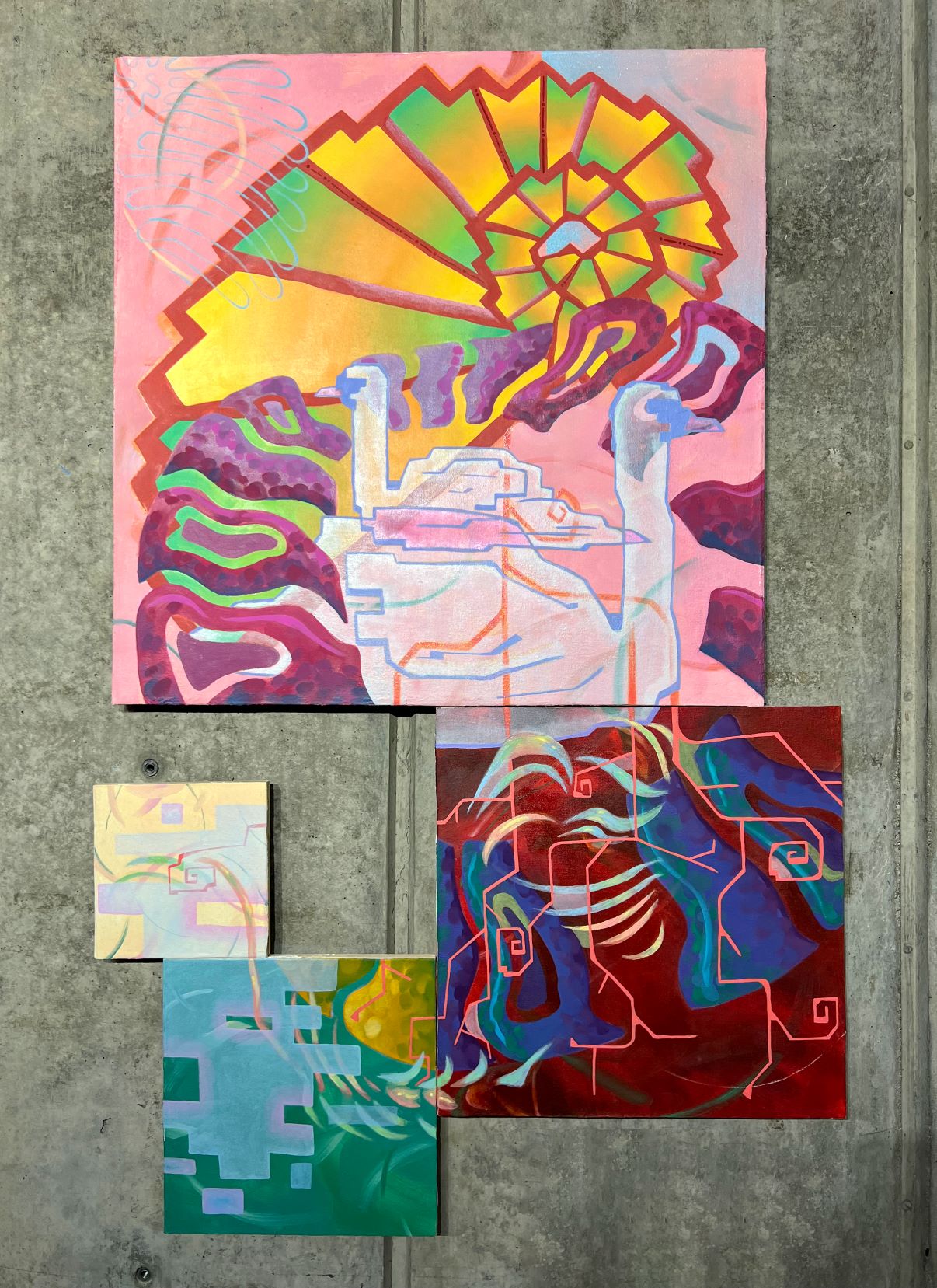Junior, Stamps School of Art & Design

Oil painting on wood panel
Abstract
Created over the course of the Fall 2024 semester, “Wake” is a painting project from Stamps course “Where Do Paintings Come From?” that synthesizes shape, color and repetition to articulate the powerful presence of the Fibonacci sequence throughout the natural world. Three assigned phases dictated its creation: the arrangement of four wooden panels, a repetitive element of ammonite growth chambers, and a diagram of a whole ammonite. A variety of paint application methods and colors culminated in a vibrant, spiraling composition. These repetitions of spirals throughout the painting articulates the abundance of the ratio in humans, plants, and animals.
This piece was created with oil paint using a variety of techniques. Through a range of varying brushstrokes creating smooth gradients, colorful transparencies, and opaque lines, intentional layering creates a unique ecosystem of repeated spirals. I chose to combine rigid and sharp lines with curved ones to portray the spiral as a powerful object despite curvilinear disruption. Interactions between these objects were important to highlight, similar to how the fibonacci spiral is embedded in the growth of different taxonomic groups: humans, oceanic life, and plants.
